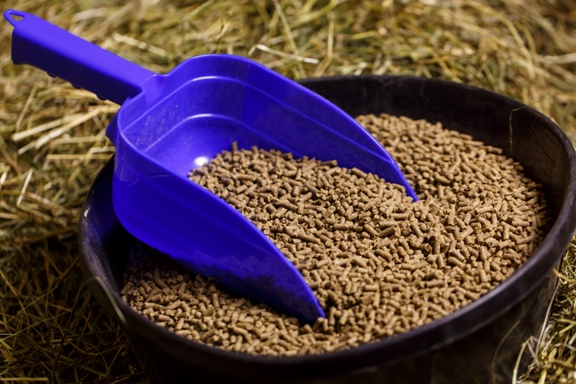Amino Acids in Horse Feed

About Amino Acids
Horses of all ages require adequate amounts of protein for maintenance, growth, reproduction and work in addition to structural health.
- Protein is made up of amino acids, similar to a link in a chain
- Total protein is important, but horses actually require essential amino acids.
- Essential amino acids must be supplied in the diet since horses cannot produce them on their own.
- Crude protein indicates the total amount of amino acids in the feed, both essential and non-essential
- Guaranteed levels of amino acids indicate that quality protein levels are available for absorption.
Essential vs. Non-Essential
Amino acids are the building blocks of protein and indicate the quality of the protein sources in a feed. Horses cannot synthesize all of the amino acids required for development and maintenance. Those that must be provided in the diet via feed and hay or pasture are called "essential" amino acids, while those that the horse can synthesize on their own are called "non-essential".
Limiting Amino Acids
Lysine, methionine and threonine are the first limiting amino acids. They are "limiting" because if they are deficient, the horse cannot make full use of the protein for hair coat, hoof growth and muscle development. This means that if a horse runs out of lysine, it can’t use any additional methionine. Additionally, if it has enough lysine, but runs out of methionine, it can’t use the next amino acid in line, and so on.
How the Horse Uses Amino Acids
Growth and Reproduction
- Building blocks for body cells
- Growth can be impaired if protein intake is inadequate
- Required for fetal development
Maintenance
- Preserves muscle mass in older horses
Work
- Physical activity, endurance and condition are all affected by amino acid intake
Effects of too much protein
- Wasted feed costs
- Sweating
- Water & Electrolyte Losses
- Heat Exhaustion
- Increased Urine Volume
- Fatigue
Lowering crude protein while meeting essential amino acid levels allows horse owners to reduce the amount of ammonia produced, reduce the risk of dehydration and improve stall air quality.
